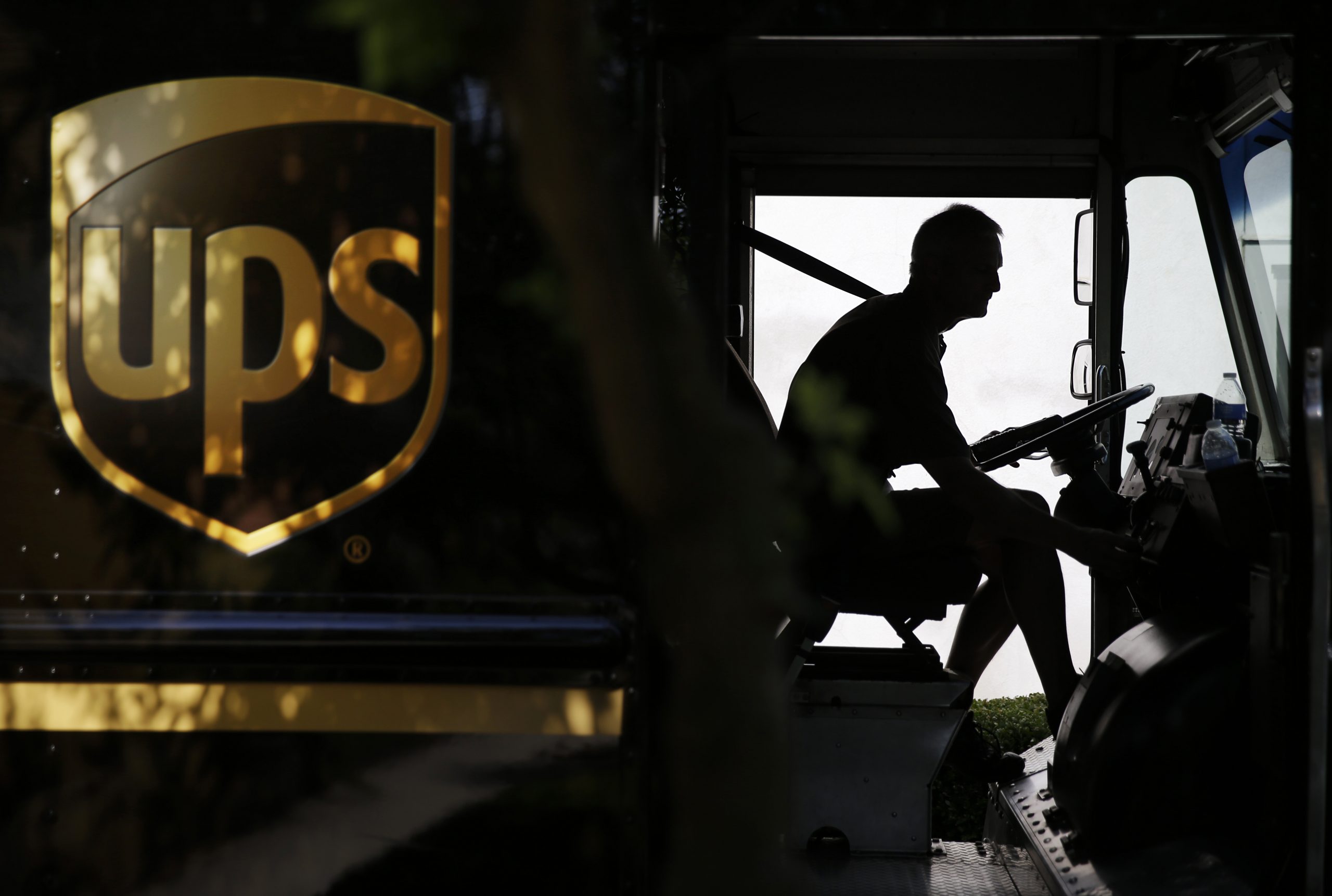It was one of the biggest gun heists in recent memory: A band of thieves broke into several trailers parked at a UPS freight lot in Springfield, Missouri, and hauled away more than 650 firearms.
The highly orchestrated October break-in, which resulted in the indictment of five men on federal theft and gun charges, was not an isolated incident. Complete statistics are hard to come by, but government reports suggest thousands of firearms have vanished from interstate shipments over the past two decades. Many were later used to commit crimes.
The thefts, security experts said, underscore vulnerabilities in the sprawling supply network that routes millions of guns to American consumers every year. Those gaps are in part the product of weak security standards, which put guns at heightened risk of being intercepted before they reach store shelves. They also handicap law enforcement officials, who may not learn that a shipment has vanished until the guns begin turning up at crime scenes.
“I imagine this problem is bigger than anyone realizes,” said Ben Hayes, a former official with the Bureau of Alcohol, Tobacco, Firearms and Explosives who oversaw the agency’s stolen guns program. “Nobody really knows.”
Until recently, gunmakers, wholesalers and other federally licensed dealers had to notify law enforcement only when guns went missing from their factories, warehouses, or stores. Guns that disappeared while in transit did not have to be reported at all. From fiscal years 2010 through 2014, law enforcement recovered more than 6,600 crime guns that traced back to dealers who claimed to have never received them — but never reported the theft or loss to federal law enforcement.
The ATF extended reporting requirements to in-transit losses two years ago. But those rules only cover dealers, not the shipping companies that actually ferry guns from place to place.
Security experts said the new rules were likely too weak to capture the extent of the problem, and that shipping companies might avoid disclosing guns lost in transit in hopes of warding off negative publicity
“A lot of people don’t want to talk about it, so they don’t report it, don’t go public with it,” said Keith Lewis, vice president of operations for CargoNet, a firm that tracks and helps investigate cargo thefts. “It’s all about brand protection.”
As The Trace previously reported, thieves are increasingly snapping up unsecured guns from cars, homes, and stores, creating an abundant underground market where violent criminals and drug dealers can buy and trade weapons. But the heist in Springfield and others like it show that higher ends of the supply chain are also susceptible. Over a recent five-year period, at least 25 firearms lost or stolen from interstate carriers were linked to a homicide, according to ATF documents. Thousands more were involved some other sort of crime.
In one case, a UPS truck driver in Southern California stole more than 70 guns destined for area retail outlets and then enlisted a friend to help him sell them on the street. One of those guns, a .22-caliber Browning pistol, surfaced in the possession of Isaac Arriaga. Arriaga, a suspected gang member, used the pistol in 2012 to carjack the driver of a Land Rover and then fire at officers who chased him down a Moreno Valley freeway.
News reports and court documents show that most in-transit gun thefts are the work of disgruntled or wayward employees who pluck boxes off conveyor belts, pilfer packages out of delivery trucks, or swap shipping labels with their home addresses. In Maryland, an employee was caught in 2015 trying to sneak out of a shipping facility with guns taped to each leg.
Last fall’s heist in Springfield could have also been an inside job, with security experts and former law enforcement officials saying that the thieves probably got a tip about guns passing through the UPS facility that day.
Mark Doyle, president of Jack L. Hayes International, a security consulting firm, said distribution centers are notoriously tough to police because they typically involve lots of workers toiling at breakneck speeds to get shipments to their destinations on time.
“Everything’s moving so fast because the whole thing at a distribution center is get it in, get it out,” Doyle said. “If you’re an employee, that works to your benefit. You know what your company is doing to prevent theft, plus you’re there for 40 hours a week or more, so you can bide your time, wait for a breakdown, and take advantage of that opportunity.”
Cargo losses and thefts cost companies in every industry billions of dollars each year. UPS and FedEx require guns to be inconspicuously packaged, theoretically preventing anyone from knowing that weapons are inside. Commercial carriers have also established their own procedures for locating lost items, including firearms, and in “many instances,” they find the missing guns, according a 2010 ATF report.
Shipping companies also require that guns be declared, and the fact that law enforcement agencies have recovered thousands of firearms lost or stolen in transit is evidence that gaps persist.
A spokesman for UPS declined to detail the company’s security practices. In 1999, after workers stole 29 handguns from a Maryland distribution center, UPS adopted a policy requiring handguns to be sent via next-day air service. The company deemed the idea safer than ground delivery because firearms would spend less time on the move. Court documents show that the company has also used metal detectors and X-ray machines to screen employees and their belongings before they leave work.
Asked if UPS would be reviewing its security practices after October’s theft in Springfield, the spokesman, Matthew O’Connor, said such reviews occur on a “regular basis … separate from any specific situation.”
Other carriers have also grappled with thefts. A FedEx cargo handler in New Jersey was arrested in 2008 for taking 146 pistols and trying to sell them out of his car in local public housing projects. In 2013, two men were sentenced for stealing 136 guns from a Con-way Freight facility in Billings, Montana, and trading them for drugs and money. Three years ago, boxcar thieves stole 111 firearms from a Norfolk Southern train yard in Chicago while the weapons were en route from New Hampshire to Washington state.
In 2000, the ATF proposed a rule that would have compelled manufacturers, wholesalers, and other licensed dealers to monitor inventories and alert law enforcement when guns vanished in transit. Dealers also would have been forced to put a system in place to verify that guns arrived safely at their intended destinations. The ATF pulled the proposal after objections from the gun industry, which persuaded Congress to pass an amendment that forbade mandatory inventory checks.
The ATF reintroduced a narrower version of the rule in 2014, requiring dealers to declare in-transit thefts, but not mandating that they monitor inventories or verify that shipments were actually received. Instead, the rule allowed manufacturers, wholesalers and other dealers to rely on the word of their customers or the shipping companies, and report only when they were notified that guns failed to show up.
The gun industry, led by the National Shooting Sports Foundation, again cried foul, contending that the reporting requirement would put a squeeze on gunmakers. Savage Arms, a Minnesota-based maker of rifles and shotguns, lambasted the proposal as an enormous logistical burden that would “require an estimated 2-3 full time personnel to manually track, log and store documentation related to the hundreds or thousands of open orders on any given day.”
Contact Us
Learn how to contact our reporters securely.
Despite the outcry, the rule came into effect in February 2016. But critics, including Hayes, the former ATF official, said it still leaves open the possibility for missing guns to go unreported because senders may not know whether shipments arrive intact. Hayes said some of the onus should fall on the recipient of the firearms to confirm that every gun is accounted for on arrival.
Lewis, the CargoNet security expert, said gun dealers could borrow lessons from the pharmaceuticals industry, which voluntarily adopted security guidelines for the transportation of prescription drugs.
“We’ve buttoned down the supply chain for the pharmaceuticals, but not for the firearms,” Lewis said.
The guns stolen from the UPS facility in Springfield last October were were traveling from Beretta USA in Maryland to Bass Pro Shops in Missouri, according to a complaint filed in U.S. District Court. Workers at the facility had sought to block access to the trailers’ doors by parking them back-to-back and walling them off with larger containers.
To clear a path, the thieves hot-wired two tractors and used them to push and pull containers around the parking lot. They loaded 600 .380-caliber handguns, 54 12-gauge shotguns, a pallet of boots, power tools, 12 cases of soda and other items into what was likely a stolen Penske moving truck. Then they drove to a storage facility several hours away in Dallas, court documents show.
The documents show that police found the Penske truck largely empty and abandoned in Seagoville, Texas, a week after the heist. An affidavit shows that several of the suspects’ cell phones were in the vicinity of the UPS facility at the time of the burglary and that investigators matched three of them to DNA found in the UPS trailers and the abandoned moving truck.
It is not clear what happened to most of the stolen guns, but one of them was recovered in November when police caught up with two of the suspects at the Redneck Heaven restaurant and bar in Arlington. One of the suspects had parked his Chrysler 300 in the lot outside. After arresting him, the officers called for a tow. When the tow operator opened the Chrysler’s door, the car’s interior lights came on, illuminating one of the stolen Beretta pistols lying on the console.
The ATF indicated that additional people may have been involved in the crime and is still investigating.

